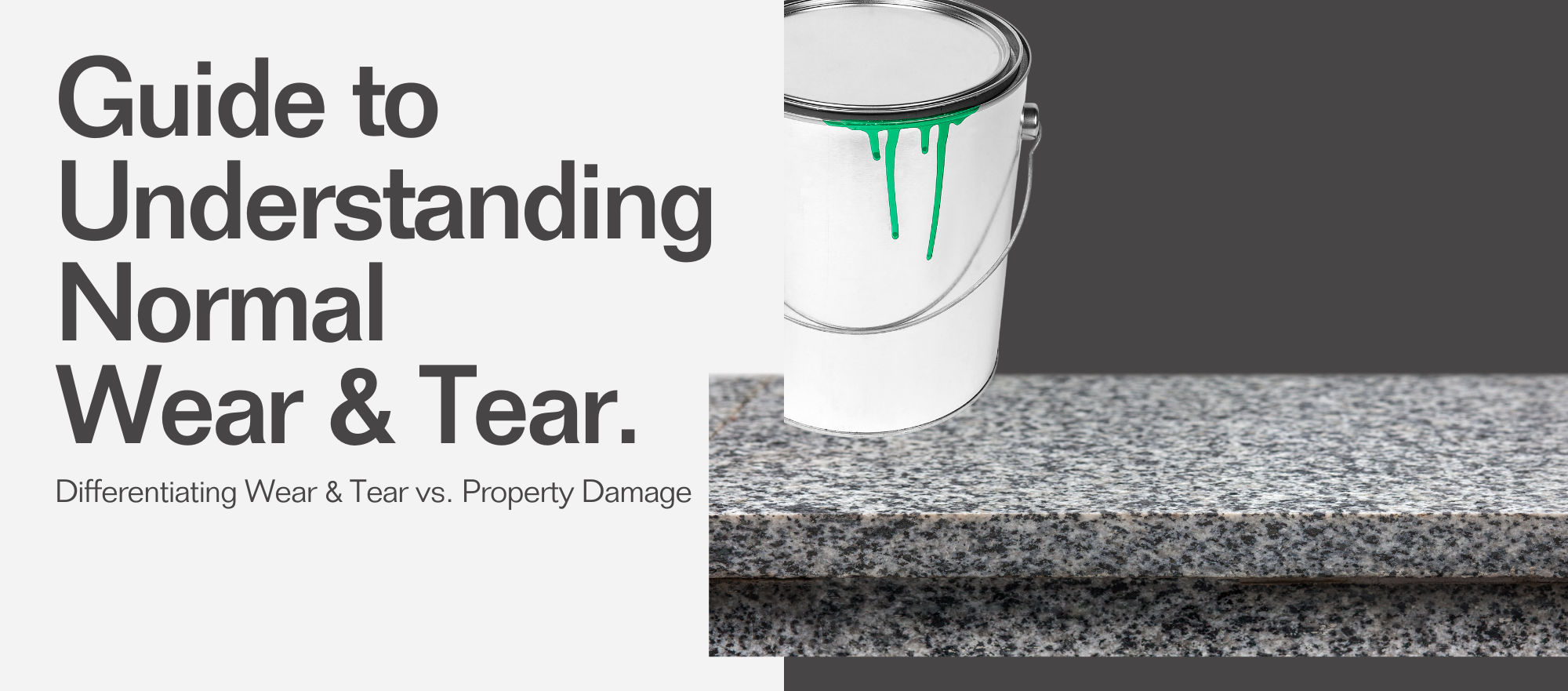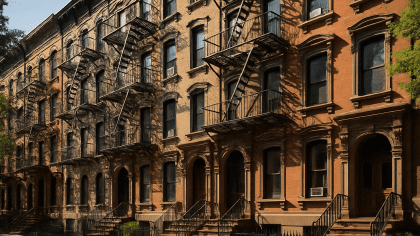When managing rental properties, understanding “normal wear and tear” is essential for landlords and tenants alike. This term represents the inevitable depreciation that happens in any home due to everyday use. Both parties can avoid misunderstandings and disputes by recognizing the difference between expected wear and tear and actual damage, which often impacts housing contracts and security deposits.
In this guide, we’ll explore what normal wear and tear entails, common examples, and maintenance tips for minimizing the effects of erosion over time. Plus, we’ll cover strategies to extend the lifespan of household features, legal considerations, and practical tips for property upkeep.
Quick Summary
Normal wear and tear describes the inevitable depreciation in a property due to regular use and aging, such as minor carpet fraying or fading paint. Unlike property damage, which results from misuse, wear and tear is expected in housing contracts and generally doesn’t lead to tenant charges. By understanding how to manage the gradual erosion that occurs over a property’s lifespan and taking preventive measures, landlords and tenants can preserve the property’s value and avoid disputes. This article offers practical advice on maintaining rental units, recognizing normal wear versus damage, and navigating legal considerations.
Definition of Normal Wear and Tear
Normal wear and tear refers to the natural and gradual erosion that occurs over a property’s lifespan due to daily use. In rental housing, it’s the deterioration that can’t be avoided, no matter how well the property is maintained. Wear and tear is not only expected but is often legally protected in rental agreements, making it a key element in housing contracts. For instance, landlords generally can’t deduct from a security deposit for wear and tear because it’s seen as a result of the property’s inevitable depreciation.
Key Characteristics
- Expected and Predictable: Results from the regular use and aging of materials.
- Non-Negligent: Unlike accidental or intentional damage, wear and tear doesn’t result from neglect or abuse.
- Part of the Property’s Lifespan: Includes minor erosion in carpet, flooring, walls, and fixtures.
For example, faded paint and light scratches on hardwood floors are common signs of wear. Knowing these distinctions can help tenants and landlords set realistic expectations and avoid disagreements at lease-end.
Common Examples of Wear and Tear
Recognizing examples of wear and tear can help avoid misunderstandings when it comes time to inspect the property. Here are some typical signs:
Flooring
- Carpets: Fading, minor fraying, or flattening over time due to foot traffic.
- Hardwood: Minor scratches or dulling that results from daily use.
Walls
- Paint: Light fading, mild scuff marks, or slight discoloration.
- Nail Holes: Small holes from picture frames or decorations, which are easily filled.
Fixtures and Appliances
- Appliances: Gradual decline in performance due to normal use.
- Bathroom Fixtures: Tarnishing on faucets or minor grout wear around tiles.
These common signs of aging reflect normal wear and tear and are generally accepted by landlords as part of a property’s natural depreciation.
Factors Contributing to Wear and Tear
Several factors impact the rate of wear and tear on a property. Knowing these helps both parties understand and set maintenance expectations accordingly.
1. Occupant Lifestyle
Households with children or pets may see more wear in specific areas, such as carpets, walls, and furniture. High-traffic spaces are also more likely to experience accelerated erosion.
2. Length of Tenancy
Longer tenancies usually result in more noticeable wear, such as more scuffed walls or a more pronounced fade in flooring, reflecting the property’s aging process.
3. Climate and Environment
Weather conditions, humidity, and sunlight can impact certain property features. For instance, intense sunlight may fade carpets or curtains, and humidity can cause wear on paint or wood.
4. Quality of Materials
Higher-quality materials like hardwood floors or premium paint withstand wear better, preserving the lifespan of household fixtures and improving a property’s durability.
Differentiating Between Wear and Tear and Damage
Understanding the difference between wear and tear and damage can prevent conflicts at move-out. Here’s a quick comparison:
| Wear and Tear | Property Damage |
|---|---|
| Gradual aging and depreciation | Sudden, preventable, or accidental |
| Small scuffs or fading paint | Large holes or damaged walls |
| Fraying or flattening carpet | Torn or burned carpet |
| Worn or dull finishes on fixtures | Broken or missing fixtures |
Why It Matters
This distinction affects the handling of security deposits, as landlords can deduct costs for repairs caused by property damage but not for normal wear and tear. Differentiating these issues fairly in housing contracts protects both parties.
Impact on Property Value
Normal wear and tear affects property value, as even minor erosion accumulates over time. Items like carpets, countertops, and paint are especially vulnerable. While wear and tear are expected, significant depreciation can decrease the appeal of a rental unit, especially when competing with newer listings in the housing market.
Preserving Property Value:
- Routine Maintenance: Regular checks can identify and mitigate wear before it worsens.
- Material Upgrades: Investing in durable materials adds resilience to high-traffic areas.
- Scheduled Replacements: Plan for periodic updates to major items like paint and carpets.
Maintenance Practices to Minimize Wear and Tear
Routine maintenance is essential to maintain a property’s value over time. Here are some effective strategies for minimizing the impact of wear and tear:
- Regular Inspections: Performing periodic inspections helps catch small issues before they lead to larger repairs.
- Cleaning High-Traffic Areas: Focusing on entryways, hallways, and shared spaces reduces the accumulation of dirt and wear.
- Touching Up Paint: Small touch-ups keep walls looking fresh and can delay the need for a full repaint.
- Encouraging Responsible Care: Providing tenants with care guidelines, such as how to clean floors or maintain walls, promotes long-term property preservation.
Legal Implications in Rental Agreements
Rental agreements often address wear and tear policies, security deposit deductions, and tenant responsibilities. Understanding these contract terms helps avoid surprises at move-out.
Security Deposit Usage
Most regions legally limit security deposit deductions to cases of damage or negligence, protecting tenants from unfair charges related to normal wear.
Move-Out Inspections
Move-out inspections are commonly used to document a property’s condition, identifying issues beyond wear and tear that may require tenant responsibility.
Understanding tenant and landlord rights can help both parties navigate wear and tear responsibilities fairly, reducing disputes over costs and repairs.
Repairing vs. Replacing Worn Items
When items reach the end of their lifespan, landlords must decide whether to repair or replace. Here’s a breakdown of when each option may be appropriate:
- Repair: If an item has minor wear, like a small carpet patch, it may only need a quick repair.
- Replace: When an item is beyond repair, such as an old, heavily frayed carpet, replacement is usually the best choice to maintain property quality.
Maintaining an updated property plan with expected replacement timelines can simplify this process.
Case Studies of Wear and Tear in Different Settings
Wear and tear varies based on setting and tenant lifestyle. Here are a few scenarios to illustrate:
- Student Housing: Frequent turnover can lead to higher levels of wear in shared areas, like kitchens and hallways.
- Family Rentals: Carpet, walls, and common areas may show signs of wear more quickly in family-oriented rentals due to higher traffic.
- Luxury Apartments: Tenants may expect premium upkeep in luxury units, so signs of wear could impact tenant satisfaction.
These cases show how erosion in a property’s features differs based on tenant type and how managing wear can align with tenant expectations.
Strategies for Long-Term Care and Preservation
Investing in the long-term care of a property can save time, reduce maintenance costs, and extend the lifespan of its features. Here are a few effective strategies:
- Invest in Quality Materials: High-quality flooring and paint add durability and reduce frequent repairs.
- Educate Tenants on Care: Providing simple maintenance guidelines helps tenants protect the property.
- Implement Routine Inspections: Regular checks prevent minor issues from becoming costly repairs.
With a focus on preserving value over time, landlords can enhance tenant satisfaction and keep properties in great condition.





